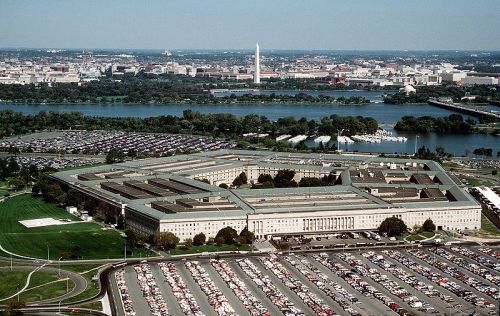Cross-posted from The Wonk Room.
For the first time, the Pentagon’s primary planning document addresses the threat of global warming, noting that it will accelerate instability and conflict around the globe. Former Senators John Warner (R-Va.) and Hillary Clinton (D-N.Y.) added language requiring the department to consider the effects of climate change on its facilities, capabilities, and missions to the 2008 National Defense Authorization Act. The Department of Defense’s Quadrennial Defense Review, officially released today, discusses the department’s “strategic approach to climate and energy:”
Climate change and energy are two key issues that will play a significant role in shaping the future security environment. Although they produce distinct types of challenges, climate change, energy security, and economic stability are inextricably linked. The actions that the Department takes now can prepare us to respond effectively to these challenges in the near term and in the future.
The QDR notes that climate change affects the Department of Defense “in two broad ways:” first, global warming impacts and disasters will “act as an accelerant of instability or conflict,” and second, military installations and forces around the globe will have to adapt to rising seas, increased extreme weather, and other effects of global warming:
Assessments conducted by the intelligence community indicate that climate change could have significant geopolitical impacts around the world, contributing to poverty, environmental degradation, and the further weakening of fragile governments. Climate change will contribute to food and water scarcity, will increase the spread of disease, and may spur or exacerbate mass migration. While climate change alone does not cause conflict, it may act as an accelerant of instability or conflict, placing a burden to respond on civilian institutions and militaries around the world.
The military is working on not just responding to the impacts of global warming, but also mitigating the threat by reducing global warming emissions. Increased use of renewable energy and energy efficiency not only lessens the military’s enormous carbon footprint, but also delivers immediate security benefits:
Energy efficiency can serve as a force multiplier, because it increases the range and endurance of forces in the field and can reduce the number of combat forces diverted to protect energy supply lines, which are vulnerable to both asymmetric and conventional attacks and disruptions.
The military’s overall agenda is backed up by specific action. In line with President Obama’s executive order to devise a greenhouse pollution reduction plan, the Department of Defense has committed to cutting emissions from its non-combat facilities by 34 percent by 2020. The Air Force, long dependent on billions of gallons of imported oil, is investing deeply in all forms of renewable energy. The Army is making major investments in battery technology, renewable energy, and electric drive vehicles.
As Vice President Gore has noted repeatedly, the “climate crisis, the security crisis, and the economic crisis have a common thread” — our dependence on fossil fuels. If we continue the status quo, threats will continue to multiply on every front — a fact our military, if not our politicians now in the Senate, now recognizes.




